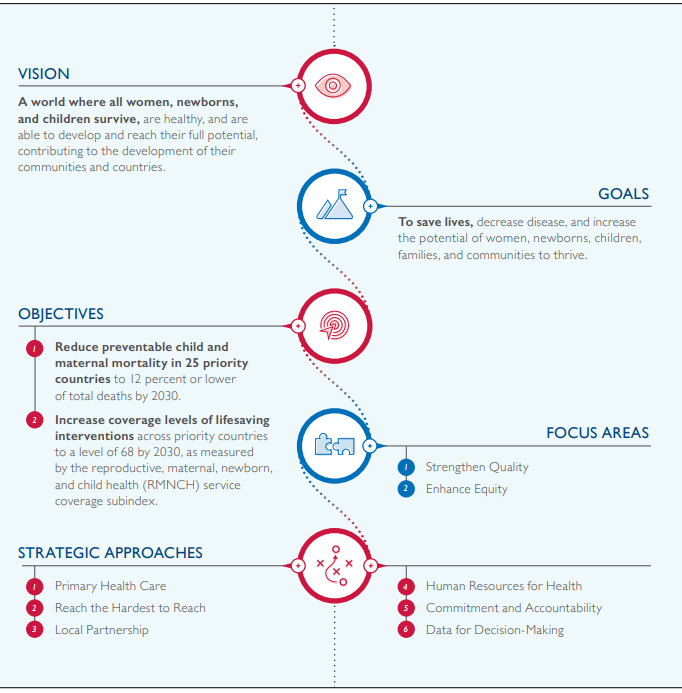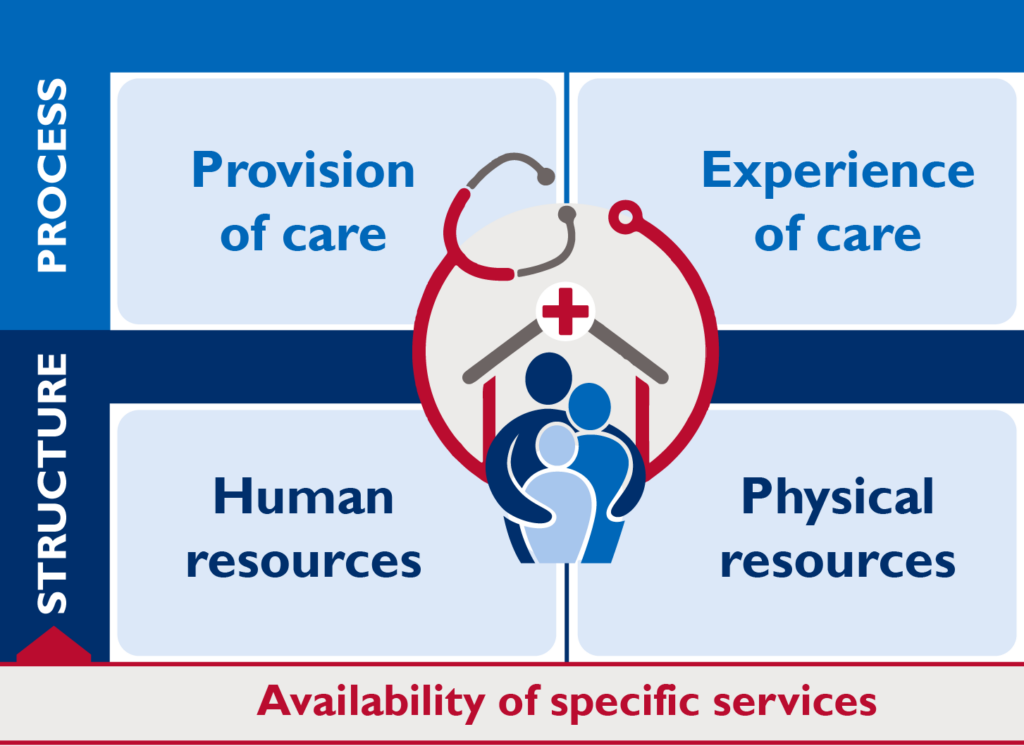How SPA Surveys Support Countries to Prevent Child and Maternal Death

USAID recently released the Framework for Preventing Child and Maternal Death 2023-2030, building on the achievements and lessons learned from the past decade to provide a roadmap for the future: a world where all women, newborns, and children survive, are healthy, and are able to develop and reach their full potential.

The new Service Provision Assessment (SPA) survey can support countries to meet this vision, as the SPA survey aligns with the two focus areas of this framework: strengthening quality of health care and enhancing equity through concerted efforts to reach poor, marginalized, and vulnerable women and children.
SPA Survey Data Strengthen Quality of Care
The SPA survey has been revised to clearly and expressly measure quality of care as defined by The DHS Program’s quality of care framework.

This framework is based on Donabedian’s components of quality (structure, process, and outcomes) and is similar to frameworks adopted by the WHO, the Quality, Equity, and Dignity Network, and others. The SPA was revised using a stakeholder-driven process to select key indicators that capture measures from all aspects of the quality of care framework including:
- Availability of essential medicines, equipment, and commodities
- Availability of an adequate number of trained, supported health care workers
- Assessment of whether provision of clinical care follows guidelines
- Assessment of whether care is client-centered and respectful
The SPA focuses on the clinical areas most likely to have an effect on child and maternal death: family planning, antenatal care, maternity care including newborn resuscitation, and sick child care. In addition, USAID’s Framework document uses data from SPA surveys to highlight dramatic gaps in quality of care for sick child care.
SPA Survey Data Enhance Equity
While the past decade has shown many improvements in child and maternal mortality, we have also seen persistent inequities in coverage and quality of care. Too often, a person’s social, economic, geographic, or demographic characteristics can determine the quality of care they receive at a health facility. The revised SPA includes new measures of client characteristics including age, marital status, parity (e.g., the number of times a woman has given birth), and education. All formal health facilities in a country are eligible to be included in a SPA survey. Routine Health Management Information Systems (HMIS), on the other hand, often only focus on public health facilities. This allows data users to better understand if quality of care varies at different levels of the health system or in public vs. private facilities.
USAID’s Framework for Action describes six strategic approaches to increase quality and equity of health care services. The SPA survey from The DHS Program directly supports four of these approaches.

Strengthen Primary Health Care
The first strategic approach is to base the response to save maternal and child lives in primary health care systems, using an integrated systems approach. The revised SPA measures each of the integrated system components critical to maternal and child survival. Not only that, SPA surveys measure important aspects of primary health care not routinely captured by HMIS, such as availability of physical infrastructure and medicines, organization and facility management, health facility resilience, service availability and readiness, core primary care functions, and effectiveness. Many key measures in SPA surveys, such as adherence to clinical standards, patient-centered care, and access are not included in other commonly used health facility assessments.
Human Resources for Health
The health workforce is the foundation of health systems. The revised SPA focuses on health worker protection and measures health worker and work environment characteristics essential to support and retain a high-quality workforce. The revised SPA measures the availability of infection prevention items, health worker professional qualifications, receipt of recent in-service training and/or supportive supervision, timely payment of salaries, equal treatment and opportunities irrespective of gender, and work satisfaction, including experiences of abuse at work.
Catalyze County Commitment and Mutual Accountability
Where SPA surveys have been implemented in the past, SPA data have frequently been used to guide country health and development strategies. In Nepal, the 2015 Nepal Health Facility Survey (a SPA) was used as a baseline and to guide strategy for the Nepal Health Sector Programme 2015-2020 and the 2021 Nepal Health Facility Survey was used as an endline to benchmark progress made against the strategy.
Data for Decision Making
SPA data are high-quality and reliable. However, SPA data are only effective when they are used and applied in program design and policy making and research. The DHS Program has prepared a guide for countries to develop a data availability and use strategy to ensure that their SPA data inform country policy.


excellentapproach and program.